|
Maybe to talk about the sound quality of a boombox I should start talking about the speakers and the acoustics. One of the main problems is that most models do not have a resonance box, but the speakers share space with all the internal circuitry, which produces poor dynamic range and channel separation is not very good.
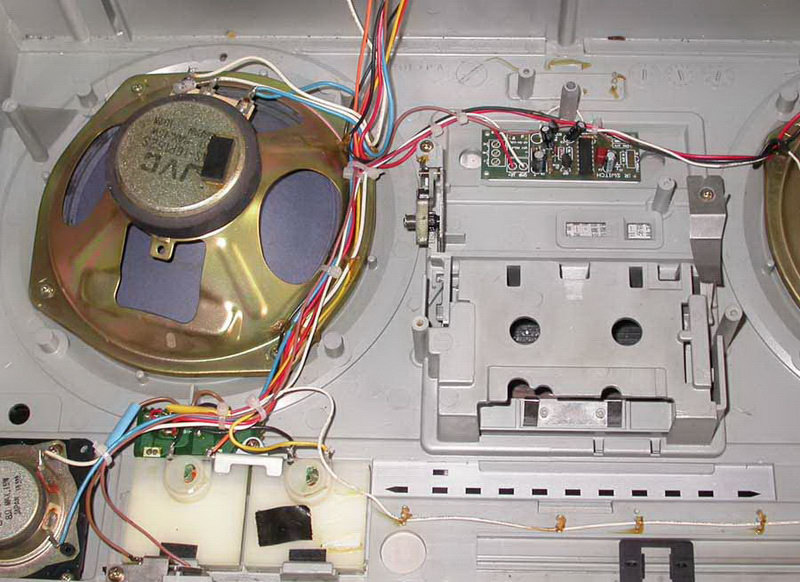
We can see here the internals of a boombox, where speakers and electronics share the same space
and there’s no acoustic resonance box. Photo: Unknown.
But also, the most serious problem (in my opinion) is the serious lack of bass because they are not amplified in the resonance box, so it escapes naturally by the rear vents. Just bring your ear close to them to check it out.
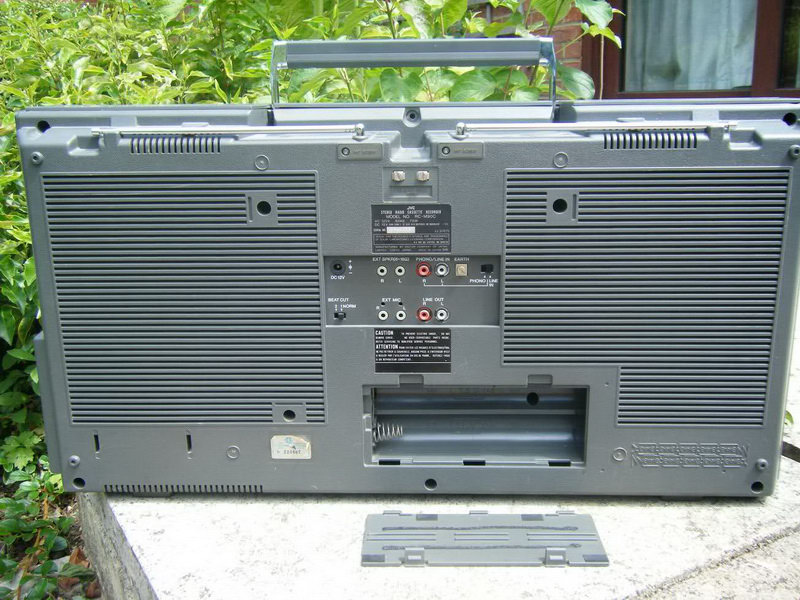
Backside of the JVC M90. Photo: Ewen.
To compensate, some models have added additional speakers to enhance the bass. One of the clearest examples are many Hitachi models. I had for some years the TRK-3D75E model.
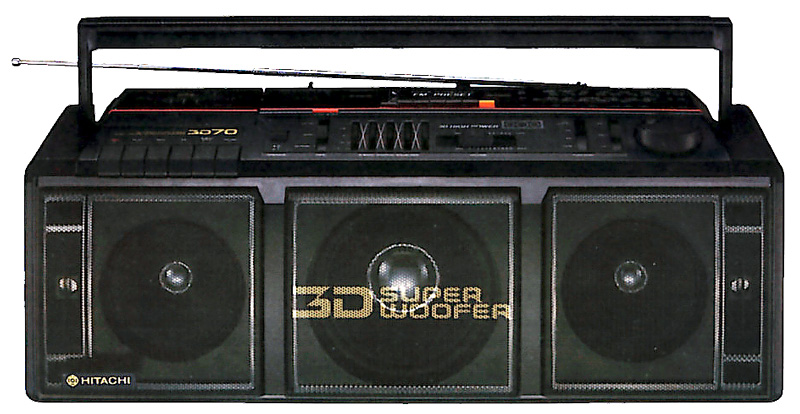
I remember when the center speaker is activated, bass was hugely increased. But I also remember to bring the ear back and notice that even deeper bass escaped backwards. The five-band equalizer helped, though. I even got to connect external speakers for surround. However, the sound quality was just decent, but unbalanced.
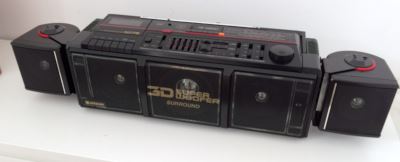
The Hitachi 3D75 with optional surround speakers.
By the way, on the sides seems to have two tweeters, but are merely hollow plastic parts, a common practice among many manufacturers and models.
A few years later, one of my sisters bought (on my recommendation) the TRK-3D50E with DES system (Dual Enclosure System), which is supposed to improved acoustics:
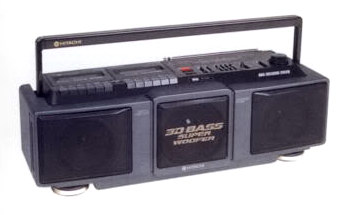
The 3D50E, with DES system.
Actually, it sounded more or less the same, or even worse, although the bass seemed somewhat stronger. I remember that the bass seemed a patch, acoustically speaking.
In the history of radio cassette have been many models with creative ideas, all focused on providing quality sound, like alternative designs with angled speakers:
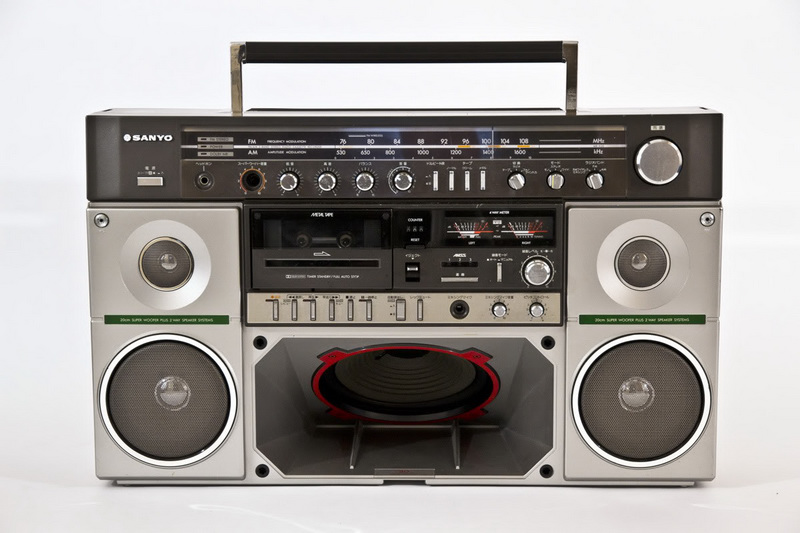
The SANYO BigBen. Courtesy of Retro.
With speakers pointing upwards:
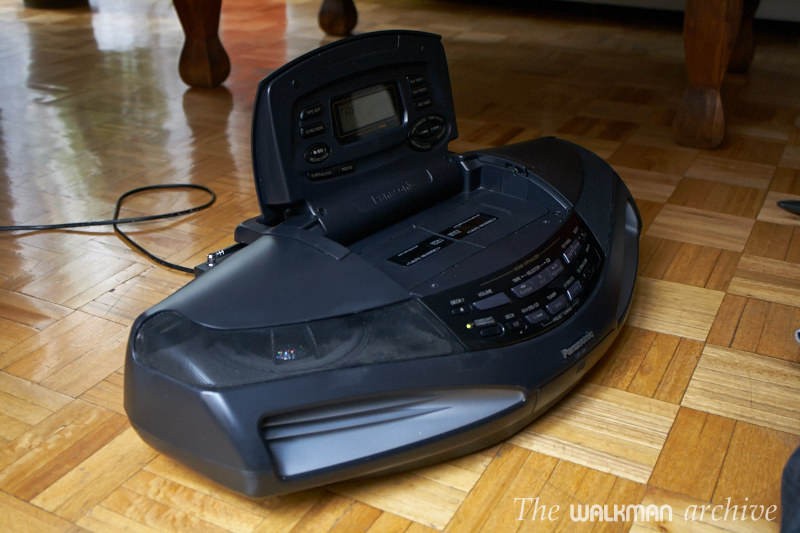
The Panasonic RX-ED77.
With dual speakers:
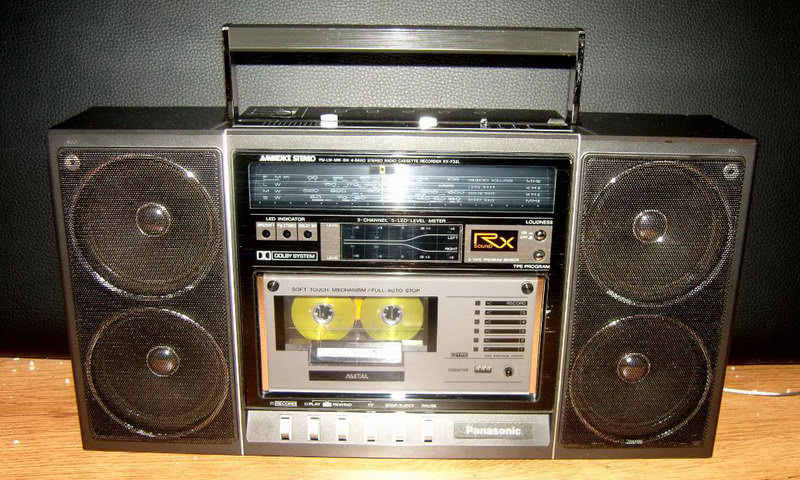
Panasonic (unknown model). Photo: Unknown
I wonder why the manufacturer would bet dual speakers, instead of putting two-way speakers, which clearly would offer a wider dynamic range. The only thing I can think is that they did it simply to get more volume at the expense of lower bass and treble (in which case, I completely rule it out).
Another strange option has speakers on the sides:
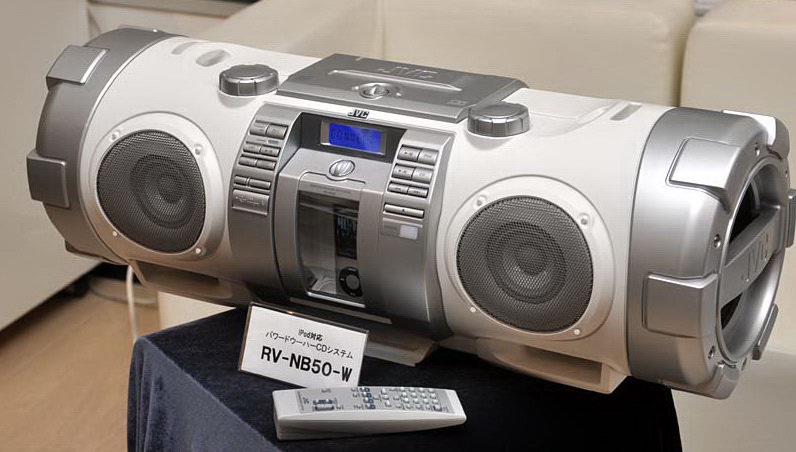
Victor RV-NB50-W, often called ‘Kaboom’.
And I ask myself, what are the side speakers for? I imagine they must be to help spread the sound in all directions, for example in situations where you're in outside trips and want to hear the sound from any position, and not only from the front.
But I really doubt that any of them have a really good sound. If ever I had doubts about how it should be a good sound, has always come to my mind an idea very quickly: just look at Hi-Fi component systems, with good 2 or 3-way speakers:
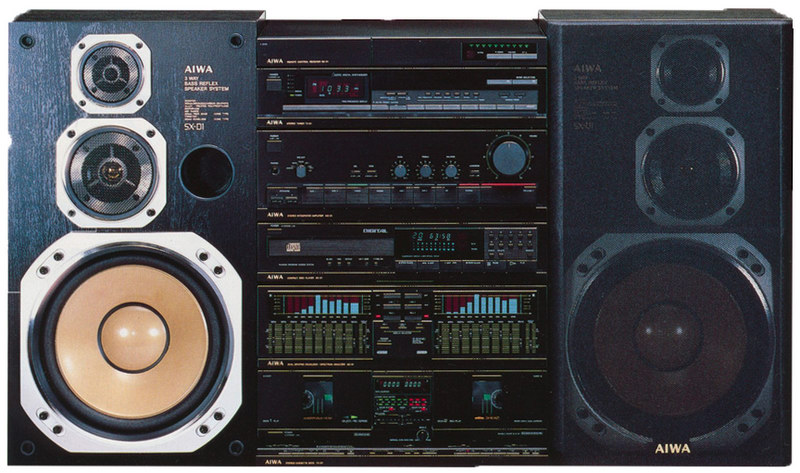
An old HIFI from AIWA (top model in ’86).
|
![]()
![]()
![]()
